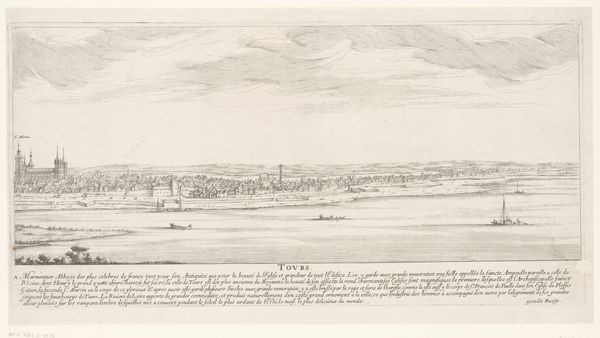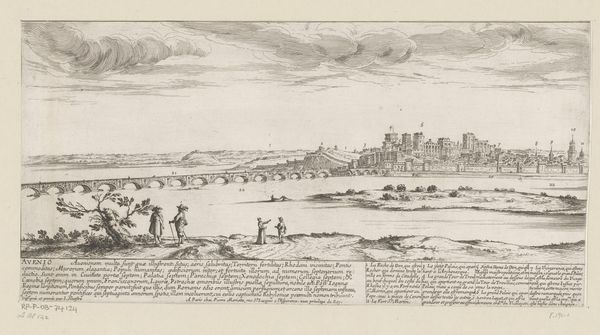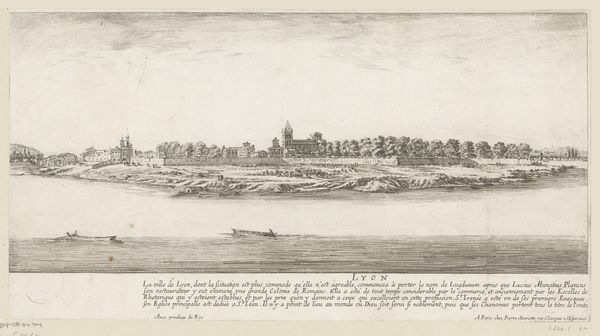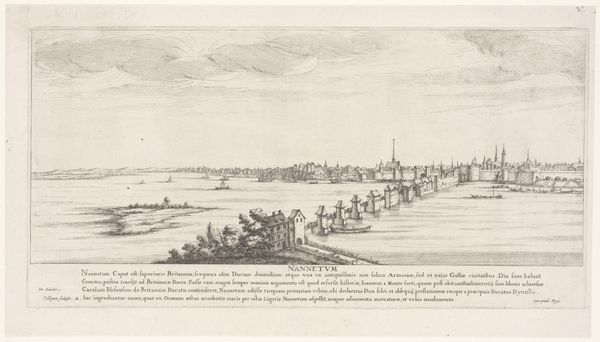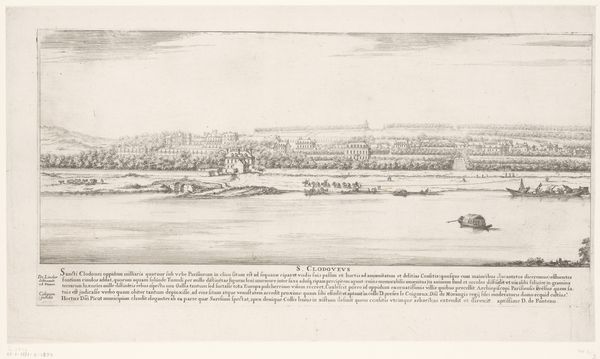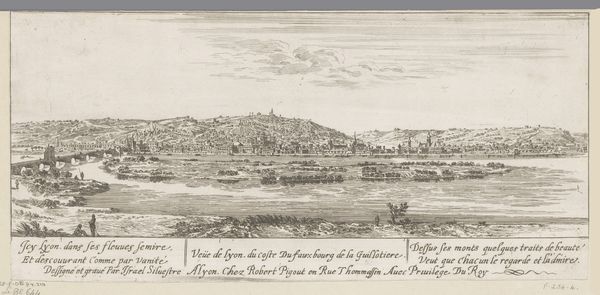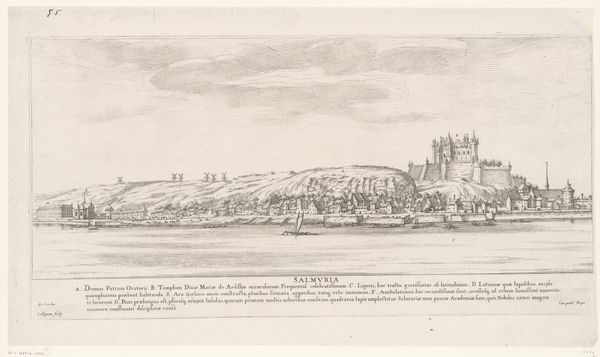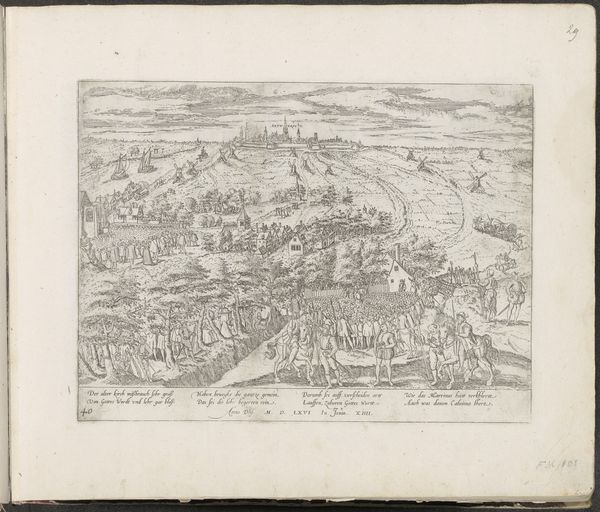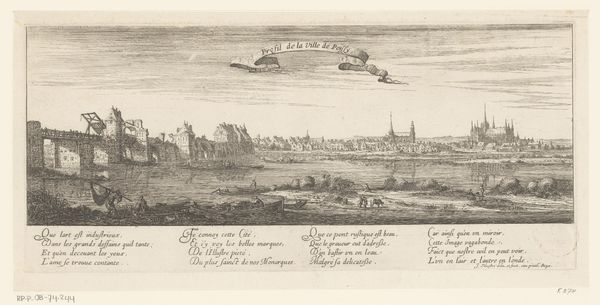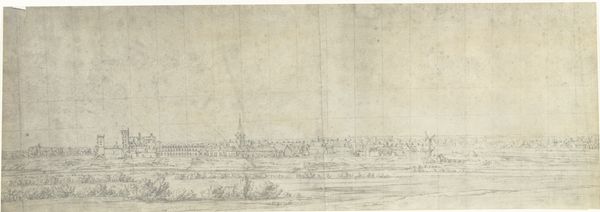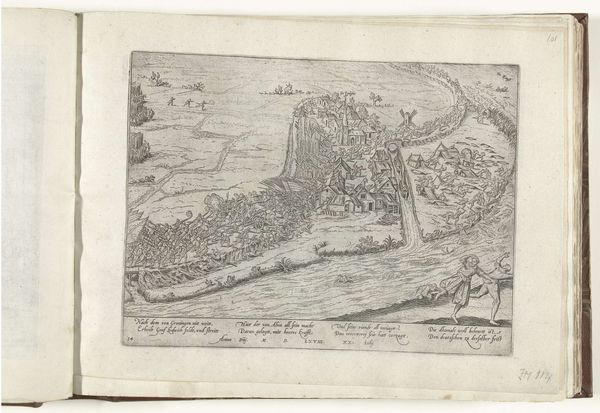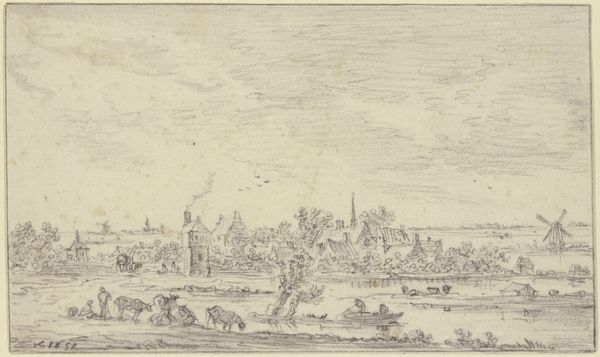
print, etching
#
baroque
# print
#
etching
#
landscape
#
cityscape
Dimensions: height 207 mm, width 409 mm
Copyright: Rijks Museum: Open Domain
Israel Silvestre created this print of Avignon using etching, sometime in the 17th century. Etching involves coating a metal plate with wax, scratching an image into it, and then bathing the plate in acid. The acid bites into the exposed metal, leaving behind lines that will hold ink. This printmaking method was embraced for its capacity to produce detailed and precise images. Silvestre exploits this to offer us a panoramic view of the city. Notice how the texture of the clouds, the reflection on the water, and the architectural details are all delineated. Silvestre's choice of etching underscores the increasing value placed on accurate representations, aligning with early modern society's interest in scientific observation and documentation. Furthermore, the reproducibility of prints allowed for a wider distribution of images, feeding into the growing market for art and knowledge. The work involved in producing such a print, though less physically demanding than carving a woodblock, still required skill and time. By attending to these aspects of material and process, we can better understand the artistic, social, and economic values circulating at the time.
Comments
No comments
Be the first to comment and join the conversation on the ultimate creative platform.
